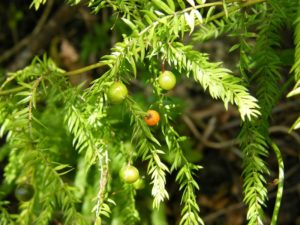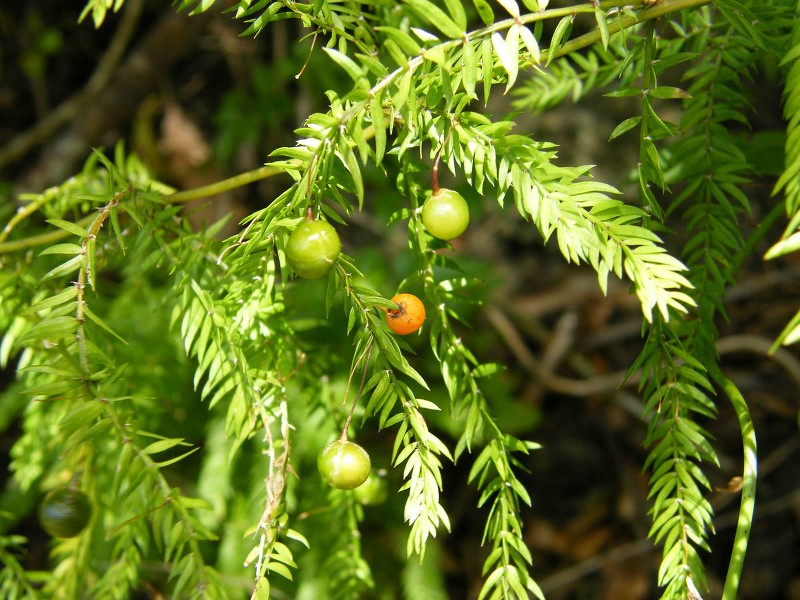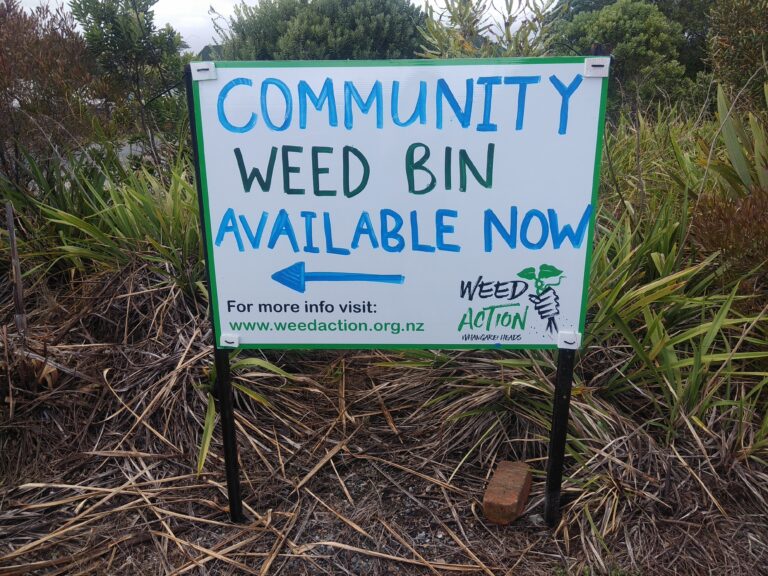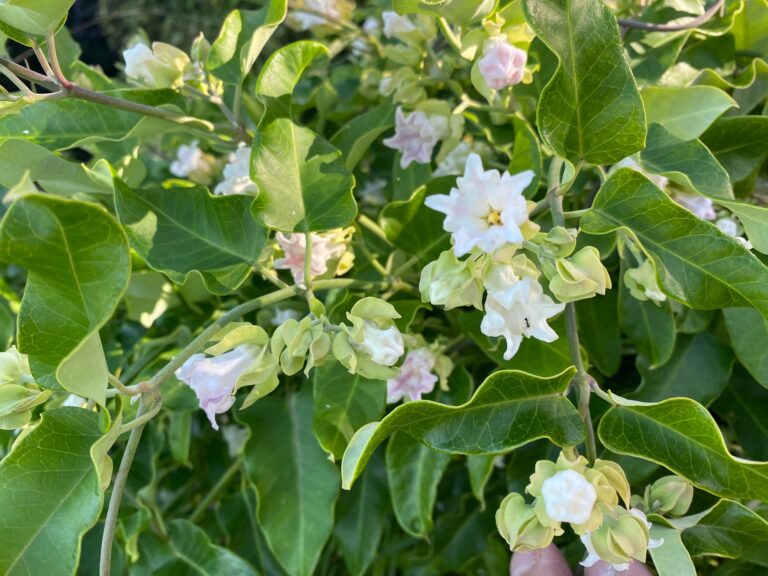 Asparagus scandens
Asparagus scandens
Just want to know how to kill it?
Skip to control methods
Also known as
Asparagus fern
What does it look like?
Scrambling & climbing plant. Long green, thin, wiry stems (2-4 m long) that are much branched at the top. Fine, fern-like foliage, small, delicate leaves. Tuberous roots. Tiny white flowers (Sept-Dec), followed in Oct- February by round green berries that ripen to red-orange (berries 8mm in diameter). Can also grow in trees as an epiphyte.
Why is it a problem
It is a very shade-tolerant, smothering vine. This means it can invade even healthy forest with an intact canopy. Once establised it can expand rapidly, smothering the forest floor and understorey up to 4m high, and preventing the growth of established species and preventing all regeneration of native seedlings. It can also ring bark and kill soft-barked shrubs and trees. It has long-lived tubers that resprout easily, requiring follow up control, and well dispersed seeds.
How does it spread?
Birds spread the plentiful seed, and tubers resprout after being spread in dumped vegetation and soil.
How much of it do we have on the Whangarei Heads Peninsula?
South of Parua Bay and Pataua South road there is very little if any climbing asparagus, apart from a few hotspots that are already the focus of elimination efforts. However, without a community effort to keep it out, eventually the infestations to the north will spread further and further south, threatening all bush blocks including Mt Manaia and Bream Head.
North of Parua Bay and the Pataua South Rd we have an ever-expanding problem, and the boundary of infestation is moving southward. There are large areas of dense infestation, but also numerous forest areas that are only just at the start of the invasion process.
What can we DO about it at Whangarei Heads?
For people living south of Parua Bay and the Pataua South Rd:
Be a part of our invisible wall. Keeping seedlings out is much easier then tackling it when it is well established. Be vigilant for seedlings and new infestations on your property and in your neighbourhood, let us know, and control early and follow up to ensure success. If we can prevent seedlings from turning into adult plants we can halt the spread and maintain a protective buffer for the southern end on the peninsula. The pasture land forms a natural barrier to the spread so we need to focus our surveillance and control on gardens, shelterbelts, scrubby areas, regenerating bush and and forest fragments. Get in touch with our weed coordinator if you think you have climbing asparagus at your place.
For people living in the denser infestation areas:
You can protect the garden or bush at your place by routinely searching for and treating seedlings and small vines before they become a dense smothering understory that is more difficult to manage. If you already have a dense infestation you want to get rid of you can implement a regime that will gradually reduce the infestation back to a level where you can maintain it and forest regeneration is still happening. Team up with your like-minded neighbours so that you have a larger area under control for maximum benefit. Get in touch with our weed coordinator to help you plan your control.
Check out the control methods below:
How do I control it?
- Dig or cut out crowns; a sharp vegetable knife or gib saw can be useful for this. Collect the hard woody rhizome and dispose of at a refuse transfer station, burn or bury. All other plant material can be left on site to rot down.
- Weed wipe (300ml glyphosate/1L water, no penetrant), total coverage not required.
- Spray in spring-early summer, lightly, with (200ml glyphosate/10L water). Do not add penetrant when spraying against tree trunks. Avoid runoff, total coverage not required.
Spray in autumn-winter (in frost-free areas only on healthy growth), with an increased rate of (300ml glyphosate/ 10L water). Infestations of plants taller than 60cm can be cut at a height of 30-60cm then this lower vegetation can be sprayed. The remaining cut material will die without the need for treatment. Spot spray any missed plants within 30-60 days.
Maintain rolling front of control, work in from edge of infestation. Follow up at least 6-monthly for eradication.
CAUTION: when using any herbicide or pesticide PLEASE READ THE LABEL THOROUGHLY to ensure that all instructions and safety requirements are followed.
Click here for more information on the herbicides referenced in the control methods, or here for more information on the suggested techniques.
Photos of climbing asparagus
Save



